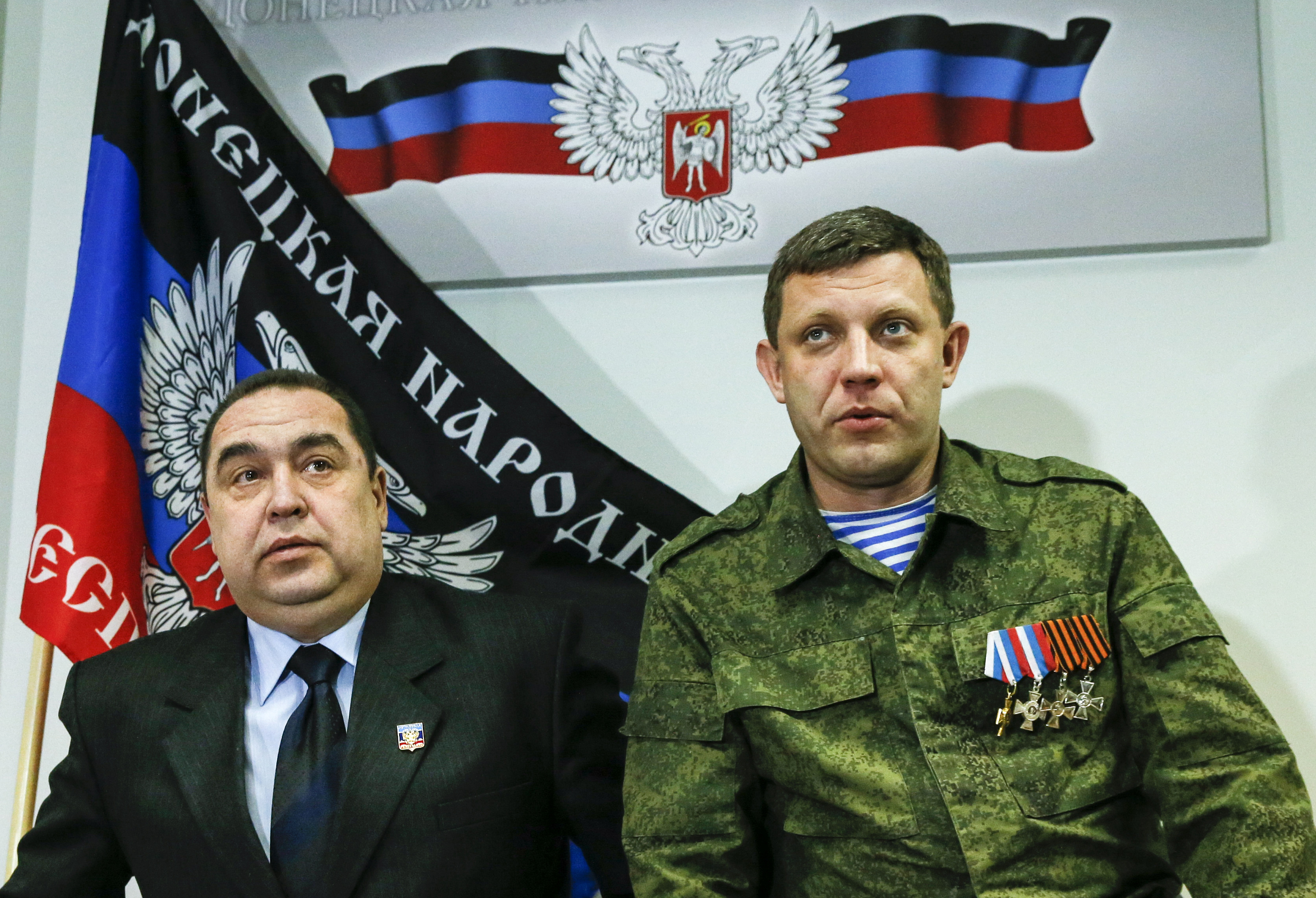Moscow, Berlin, some other Western European capitals, and most recently, US Secretary of State John Kerry are growing eager to see the Minsk Two agreement’s political phase starting in Ukraine. The Minsk Contact Group’s Working Groups have been launched, inaugurating that political phase. The Kremlin has encouraged the Donetsk and Luhansk “people’s republics” (“DPR, LPR”) to present their political proposals to Kyiv (Interfax, May 12, 13).
The Minsk Two armistice agreement, signed on February 12, is a particularly unusual armistice, in that its military clauses are not the main focus. Most of the document’s content entails far-reaching political clauses to debilitate the Ukrainian state as such.
This is a masterfully complex product of Russian diplomacy. Many Western officials, lacking prior experience with Russia’s conflict management in Europe’s East, and impatient to see Minsk Two “fully implemented,” find it hard to comprehend the Minsk process fully in their remarks on the subject. This armistice is often presented as involving a tradeoff whereby Ukraine would comply with the political clauses first, in return for which Russia would carry out the main military clauses later. That conditionality and that time sequence are rigorously set in the Minsk agreement.
The basic deal has Ukraine awarding the Donetsk and Luhansk authorities a “special status” in Ukraine’s political system, potentially with blocking powers; whereupon “foreign” forces would presumably withdraw from the conflict zone, and Ukraine would supposedly regain control of its side of the internationally recognized Ukraine-Russia border, which is currently controlled by Russian and proxy forces on both sides in that zone.
While Ukraine incurs multiple political “obligations” under this armistice, however, Russia incurs no military or other obligations; Russia is not even mentioned in the armistice or in follow-up documents as a party to this conflict. Instead, the Working Groups’ launching has consolidated Russia’s status as some kind of a mediator or facilitator between Kyiv and the “DPR-LPR.”
The force-withdrawal and border-control clauses are un-implementable as written and as currently negotiated. President Vladimir Putin and other Russian officials deny with utmost finality that any Russian forces are present in that conflict zone. In other words, no deal: Russia has nothing to withdraw. This may be sheer mendacity, but it is unchallengeable in practical terms on the ground by Ukraine or the West.
It is, however, a fact that Russian military personnel and large quantities of heavy weaponry have been integrated into the “DPR”- and “LPR”-flagged forces, which are under no obligation to disarm, and are, indeed, currently strengthening their military organizations. Moreover, under the armistice as written, Ukraine would have to negotiate with Donetsk and Luhansk about controlling the Ukrainian side of the Ukraine-Russia border, where secessionist forces are entrenched. They will undoubtedly propose some “shared” control of the border with Russia.
Thus, the basic proposition that “foreign” forces would withdraw, and Ukraine would regain border control, provided that Kyiv acts first to empower the “DPR” and “LPR” in Ukraine’s political system, is a misleading, if wishful, proposition. No such quid-pro-quo inheres in the armistice agreement; and any faint hope for Russian consent to such a quid-pro-quo died when Putin repudiated the idea (see above).
Under the February 12 Minsk Two agreement, Ukraine is supposed to enact a “special status” for “certain areas” [i.e., Russian-controlled] in the Donetsk and Luhansk provinces by negotiation with those de facto authorities. That status would be a “permanent” one, enshrined in Ukraine’s Constitution. Ukraine is further supposed to accept the holding of local elections in those Russian-controlled territories, where the secessionists are pre-programmed to win unopposed. And, beyond those territories, the Minsk agreement demands of Ukraine to “decentralize” its administrative-territorial system by changing the constitution, again by negotiation with the Donetsk-Luhansk authorities (Osce.org, February 12).
Donetsk and Luhansk, however, would simply be fronting for Moscow in any such negotiations. Moscow, not they, would judge whether Kyiv has complied with the Minsk agreement on “decentralization” and empowering the Donetsk-Luhansk “people’s republics” (“DPR-LPR”). The same agreement demands of Ukraine to pay into the social budget of those Russian-controlled territories. The Minsk agreement stipulates the completion of this process by the end of the current year.
Those are among Russia’s bold innovations in the present conflict, compared with the conflicts in Europe’s East from 1992 to date. Georgia, Moldova or Azerbaijan had not been pressured to change their constitutions in Russia’s interest or legitimize secessionist authorities in those conflicts. Some proposals to that effect (“federalization,” “common state”) were made occasionally but went nowhere, nor received any serious Western support. Georgia, Moldova or Azerbaijan were never asked to subsidize the secessionist territories’ budgets. No Western power or international organization ever accepted the validity of Transnistrian, Abkhaz, South Ossetian, or Karabakh “elections.”
Ukraine, however, is being asked to change its constitution in the interest of Russia’s local proxies; to negotiate portions of Ukraine’s sovereignty away; politically, to legitimize the armed secessionist authorities, and transfer certain budgetary resources to them; and, as a first move, to accept an international validation of “DPR-LPR’s” upcoming local elections. Russia has written these terms into the Minsk Two agreement; and it capitalizes on Germany’s support for the Minsk process through the parallel “Normandy” process, which multiplies the pressures on Ukraine to concede.
“Freezing” the conflict might not be the worst possible option for Ukraine at this stage. Russia, instead of freezing the conflict, prefers conserving it in a fluid or semi-fluid state. Moscow threatens with another push of its proxies beyond the armistice line, at a place and time of Moscow’s choosing, as it did after the Minsk One armistice and again after the Minsk Two. These tactics are designed, first, to divert Kyiv’s attention and resources from the agenda of reforms, and second, to induce Ukraine-fatigued Western diplomats to continue moving toward a compromise with Russia over Ukraine.


